USC Football Offensive Preview
The Cal Bears face off against Lincoln Riley and his playoff-caliber offense.
You know, I originally planned a scathing takedown for our new Big Ten rivals, USC, but it’s really hard to muster any kind of snark when your team is in the midst of a 4-game losing streak, including a loss to the worst team in the conference. I jokingly suggested at Pac-12 Football Media Day that Stanford was to blame for the destruction of the conference (Stanford beating USC last year set off a chain of events from USC firing Clay Helton, hiring Lincoln Riley, and fleeing the conference), but the real Pac-12 saboteur is actually USC President Carol Folt. Folt reportedly sabotaged Pac-12 expansion plans right before jumping to the Big Ten, the quintessential “F—- you, I got mine” that embodies the university. If you’re not lying, cheating, or stealing your way through life, what are you even doing at USC?
Of course, it’s only reasonable that USC would pull all the stops and look for an emergency exit on the conference after dropping 2 out of their last 3 games to Cal. Of course, because there is no karmic justice in the world, both USC and UCLA are enjoying their best seasons in recent history: USC has never before been relevant to the college playoff discussion, for instance (UCLA’s still not relevant, but that won’t stop them from desperately trying to claw their way out from under the shadow of their academic and athletic big brother schools).
New head coach Lincoln Riley comes to USC after a number of years of being blown out of the playoffs at Oklahoma, where he would have a playoff-caliber offense and would treat defense as an afterthought. USC looks much the same way, although how far USC will go depends entirely on the strength of their defense, as there are a few teams in the conference that can keep pace with the Trojans offensively. The defense seemingly operates on the principal of trying to steal a possession or two in order to tip the advantage to the offense.
Let’s take a closer look.
Offensive line
USC has one of the best (if not the best) offensive lines in the conference, and they often give their quarterback a preposterously long time to throw:
With USC finally playing up to their talent level, they put teams in a huge bind. If teams commit defenders to stop USC’s extremely talented receivers, USC has no problem protecting the quarterback or running the ball. If teams commit defenders to stopping the run or trying to pressure the quarterback, USC will find the super-talented receiver in one-on-one coverage for a 75 yard touchdown. To compete with USC, you need talent comparable to USC in at least one facet of the game (e.g. maybe you’re okay with bringing pressure if you have NFL-caliber corners to match up with USC’s receivers, etc). Utah has an excellent defensive line year after year, but a 4 man rush was not sufficient to threaten the quarterback, who has time to take a nap in the backfield:
It’s unlikely USC will face the kind of talent to threaten their offense until at least the postseason.
Quarterback
This is probably the only time in my life that I’ll say this, but the USC quarterback is not getting enough hype. For as long as I can remember, USC players have received undue hype or coverage in the media, but this is the first time I have ever thought the opposite. When I read national stories about NFL teams tanking for Bryce Young or CJ Stroud, or what’s going on in the Heisman race, I am surprised that not enough people are talking about the USC quarterback, Caleb Williams.
Caleb Williams is only in his second season (and thus not eligible for the NFL until after next season, at which point I’m sure he’ll be all anyone ever talks about), but he is by far the most talented quarterback I’ve seen in college football.
With no undue hyperbole here, I think he’s the next Patrick Mahomes, and I think he’ll be the #1 NFL Draft pick when he’s eligible in the 2024 NFL Draft (and if he were eligible this year, I’d take him over Bryce Young, CJ Stroud, or anyone else). The comparisons to Mahomes are immediately obvious: he does things with the football that should not be possible to do, and he combines ridiculous arm talent with his natural athleticism.
Starting with the most basic attributes, he has obvious NFL arm strength:
And speaking of arm talent, he is extremely accurate on his throws:
There is no doubt that Caleb Williams can make all the throws. Even off-schedule, he can fit the ball wherever he’d like:
Lots of quarterbacks can throw on the run, but it makes absolutely no sense how good Caleb Williams is throwing the ball with absolutely no platform. It doesn’t matter if he’s rolling out to his right or his left, throwing across his body, or throwing the ball in midair, he generates enough power with his upper body alone that he can consistently fire fantastic throws from any angle.
When quarterbacks are attempting to plays like this, they’re sacrificing power or accuracy as they throw on the run. Not Caleb Williams, though. He can throw across his body and still fire a laser to his receiver:
In my opinion, Caleb Williams biggest strength is his ability to throw on the run. I hyped up the offensive line in the previous section, but no unit is perfect, and it’s normal for teams to occasionally get pressure or flush Williams from the pocket. But how do you generate “pressure” against a quarterback that can still throw so accurately even when you do force him from his spot?:
It annoys me how good he is at this. You scheme up a great blitz, or your defensive lineman handles USC’s offensive lineman to get pressure, but Caleb Williams’ accuracy is still not affected. What gives?
In the following play, Caleb Williams rolls out of the pocket, and throws across his body to the middle of the field. I have to stress here that quarterbacks are taught not to do this, as it’s a recipe for disaster: you don’t generate as much velocity on the throw as you think you will, the ball has to travel a much farther distance, and that gives the defensive backs plenty of time to react and make a play on the ball. But when Caleb Williams does it, it’s not a mistake:
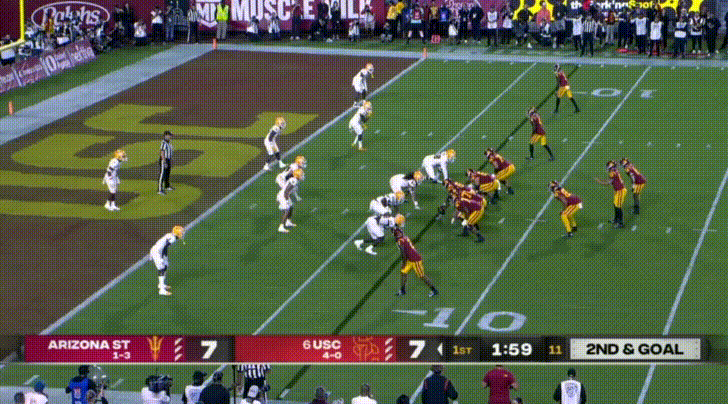
Here Williams uses the threat of the run to get most of the defense to flow the opposite direction, rolls out of the pocket, still doesn’t have the numbers (ASU has 3 DBs to the 2 USC WRs), has pressure in his face, but that still doesn’t matter to Williams:
As if it weren’t already obvious, Caleb Williams is extremely mobile in the pocket, and does a fantastic job escaping the pocket:
I mean, this is just pure athleticism in dodging the free rusher:
It reminds me of when Coach Wilcox told me that sometimes you can do everything right, but an opposing player can make a great individual effort to blow up your best laid plans. This looks like one of those times.
Caleb Williams’ other skill? Improvisation. Cal has already seen a couple of players that love to improvise (Arizona’s Jayden de Laura, Washington State’s Cameron Ward), but they don’t hold a candle to Williams. If I had any examples of Caleb William’s improvisations backfiring, I would show them here. Somehow, Caleb Williams will freestyle, and it just always works:
Here he mishandles the snap, but he still keeps his head up, avoids a sack, and pauses to look for a receiver before taking off for the first down:
QB Caleb Williams is great at running the ball, and so USC will run a lot of read-option plays to force defenses to account for him (which results in one less player defending the pass). Not only is he good at the RPO, he’s just flat-out good with the ball in his hands:
I almost want to end the article here: Saturday is the Caleb Williams show, his expensive talented receivers are secondary, and the run game is a mere afterthought. USC will score exactly as many points as Caleb Williams will allow.
To give some measure of neutrality, the Caleb Williams and the USC offense did have one bad game this year: a 17-14 win over Oregon State. Caleb Williams was uncharacteristically bad in this one, missing on all sorts of throws, even short screen passes a couple yards away (and I mean totally unforced, no pressure, straight up misses on receivers just a few yards away from him). Because of this, I’m inclined to believe that Caleb Williams was nursing some sort of injury to explain his uncharacteristically bad accuracy in this game, because it’s the only game he struggled in throwing the ball in any way. Even in that game, though, he put it together enough to lead a final drive for the win.
That is to say: Cal’s best hope to win on Saturday is for Caleb Williams not to play.
Running back
Honestly, the running game is a mere afterthought for USC. Despite poaching both Oregon and Stanford’s starting running backs (Travis Dye and Austin Jones), USC does not care to run the ball. Because of the ways that opposing teams will try to defend against the USC offense (e.g. rush 3, drop 8), the run game is merely there as a necessity to keep teams honest. If USC sees a very light box, QB Caleb Williams will audible to a run play. If Caleb Williams doesn’t have a QB spy, he’ll run it himself. Even though I think both Travis Dye and Austin Jones are good running backs, USC will only use them out of necessity. I’ve pretty much always been a fan of Travis Dye (see any of my past articles, for instance), mainly because of his ability to create his own yards. While other Oregon running backs were getting all the attention because they were posting the big numbers (although a lot of those stats should have been attributed to Mario Cristobal’s offensive lines), it was only Dye who could still create his own yards even when the blocks weren’t there. Dye is small, shifty, and elusive, and he runs like a back that belies his physical measurements.
Because of the nature of the USC offense, if you see USC running the ball, they are probably doing so against favorable conditions. One of the most notable traits of Dye this year is his running back vision:
Dye still has that same elusiveness, ability to churn his legs, and fall forward:
Most notably though, I really like Dye’s patience in letting blocks develop.
Dye is dangerous in space:
Travis Dye is receiving the bulk of the carries this season, and because of USC’s reluctance to run the ball, we haven’t seen much of the backup running backs. Thus, I haven’t really seen all that much from Austin Jones this year. Here he is in garbage time against Rice:
And here Austin Jones gets some nice blocks to set up a big run:
On the other hand, one player I do like despite limited snaps is the true freshman RB Raleek Brown (technically a 4-star recruit, but just a hair shy of the 5-star rating as the #3 RB in the class of 2022).
Raleek Brown is very raw, but obviously possess some real talent. He’s extremely fast: one false step by the linebacker was enough for Brown to beat him to the edge here (although the Heisman pose may be a little premature):
But Brown has the ability to cut and stop on a dime:
He’s also shown some good balance:
Cal’s previous opponents (e.g. Notre Dame) have established that running the ball is always a safe bet, so if Cal is seeing a lot of the USC run game, it’s a sign that our secondary is doing well covering USC’s NFL-caliber receivers. Yay, go Cal secondary!
Receivers
The USC receivers are extremely difficult for most defensive backs to cover for one reason: speed. If a USC receiver can run a 4.2 and you can only run a 4.4, then it’s only a matter of time before that USC receiver is getting open (given that he has time to get separation, but with USC’s stout offensive line, we’ve already established that will be likely). Because football is now a pay-to-win sport, USC hired acquired last year’s Biletnikoff winner (i.e. the award for the top receiver in college football), Pitt’s Jordan Addison. Addison is just fast. His elite speed mean he’s an immediate deep threat, and opposing DBs need to respect his speed. This means that he’s often open on quick out routes or dig routes, because opposing defensive backs have to give him enough of a cushion to not get burned for a touchdown. His speed means that one false step by a DB is going to be immediately punished. Stanford’s Kyu Blu Kelly is probably the best cornerback in the conference (although Utah’s Clark Phillips III is great too), and even he had trouble covering Addison:
Check out the cushion Stanford gives him, and how quickly Addison gets separation with a simple double move:
Addison rarely faces press coverages, but he’s shown crisp enough route running to create separation even against a condensed field (where he can’t simply outrun the corner):
Just by virtue of his speed and run after the catch ability, even simple screen passes are dangerous:
One of the biggest knocks against him (NFL-wise) is his small frame, and while he’ll probably not be steamrolling defenders, he’s got enough juice to fight for yards at the college-level:
The #2 receiver is WR Mario Williams, who also transferred with QB Caleb Williams (no relation) from Oklahoma. Mario Williams is another speedy, talented receiver, although he’s more mortal than Addison. Mario Williams does a great job of getting separation with his speed and also shows nice yards after catch ability, although he suffers from some concentration drops from time to time. Here he lays out for the improbably touchdown:
And here Mario Williams makes a very nice adjustment to the ball, not giving away to the DB where the ball was until the last possible second:
Although Mario Williams is not as clean of a route runner as Addison, he still does a good job of using his hands to catch the ball away from his body:
The other outside receiver (to Addison; Mario is usually in the slot) is Jerry Rice’s son, Colorado transfer Brenden Rice. Although I thought Rice looked fantastic at Colorado last year, he’s been having a very disappointing season as the starting #3 receiver this year. His number one issue (if you couldn’t tell from previous clips he’s appeared in) is drops. He’s got loads of talent (he’s Jerry Rice’s son!!!), he just hasn’t been very clutch when USC has relied on him (e.g. against Arizona, when both Jordan Addison and Mario Williams were out with injuries, and hence why that offensive shootout was closer than it should have been). Rice is still fast and can make some nice cuts (after stopping on a dime):
With Rice struggling, it was WR Tahj Washington who stepped up. Washington is also small/undersized, but he’s fast, has good hands, and runs well after the catch:
Here he again uses his speed for a nice gain:
USC’s offense “struggled” (read: only put up 45 points on Arizona) without Jordan Addison and Mario Williams, but the rest of their backups were still starters for other teams, and so there’s still plenty of talent to go around. From the Arizona game, though, it’s clear that QB Caleb Williams has much better chemistry with Addison and Williams than with any of the backups.
Conclusion
Cal is facing a high-powered offense, and hasn’t looked particularly strong in away games this year. They face a passing attack led by a future star in QB Caleb Williams, and loaded with plenty of future NFL talent at wide receiver. USC isn’t particularly great at defense, but will it even matter? Plenty of teams have tried to defend the USC offense, but the best that most Pac-12 teams can hope for is to slow USC down, while most teams make the mistake of settling for field goals against USC (as USC scores touchdown after after touchdown). It would take a high-powered offense to make the game interesting against USC (like Arizona’s one touchdown loss last week), but I am not sure Cal has the horses to compete on offense, and can’t reasonably imagine this game going well for Cal.
Go Bears.
You can find my full clips here.


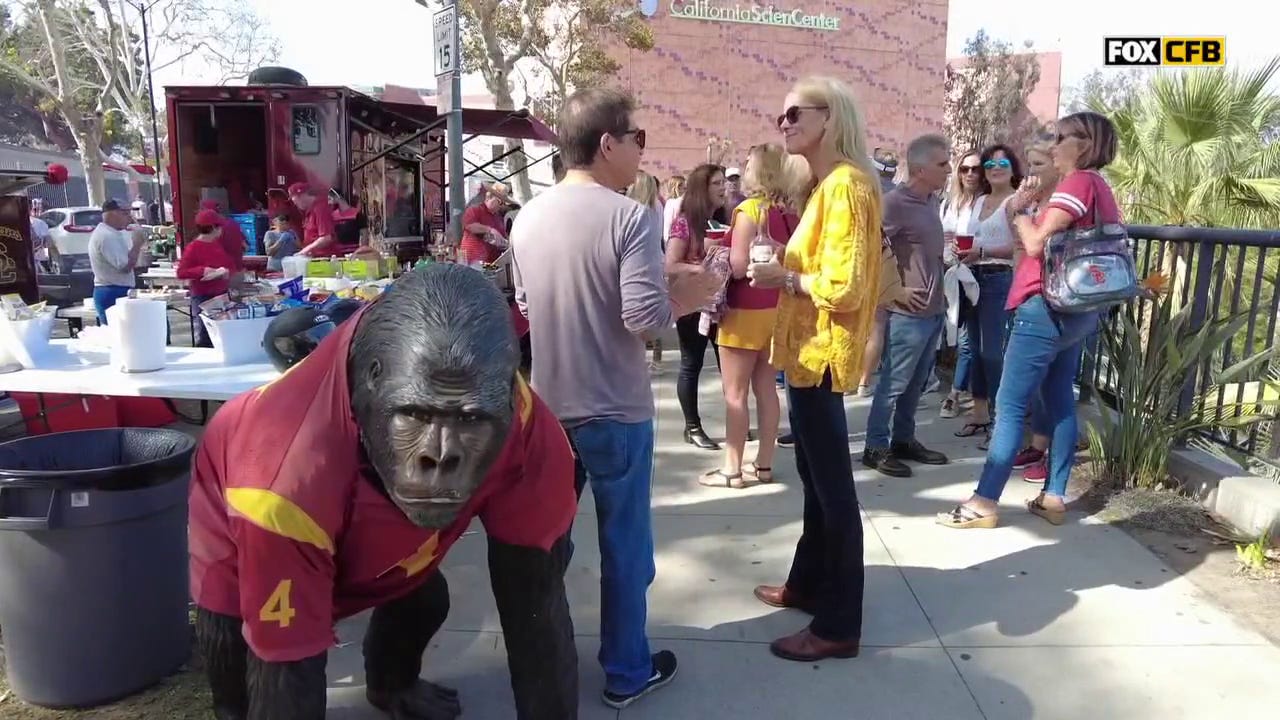


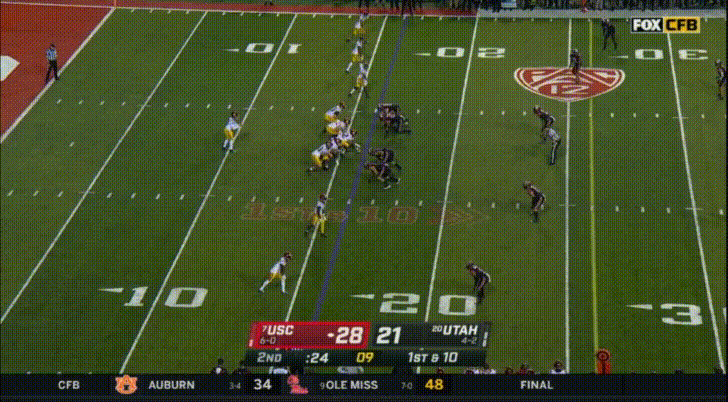
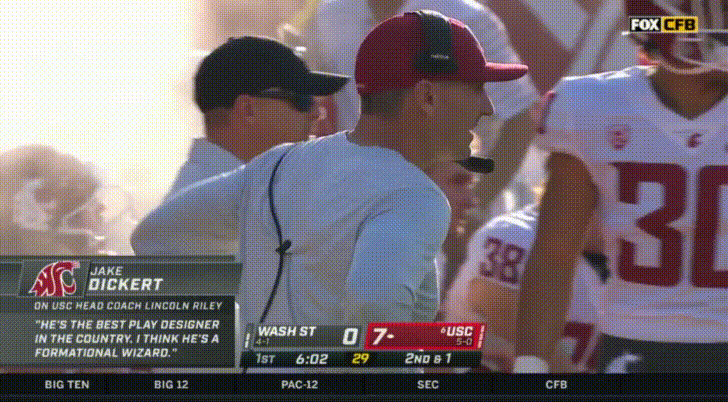
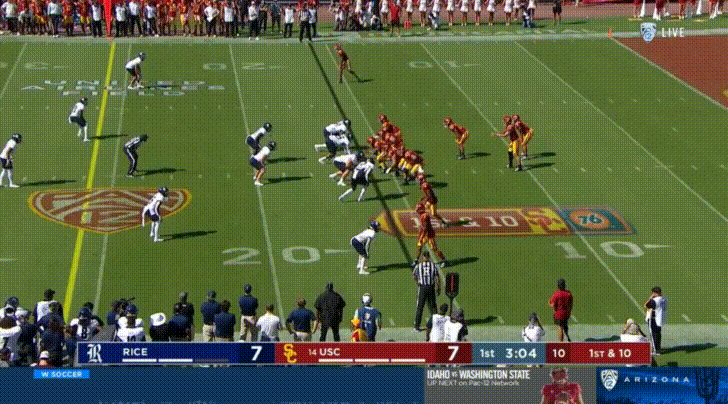

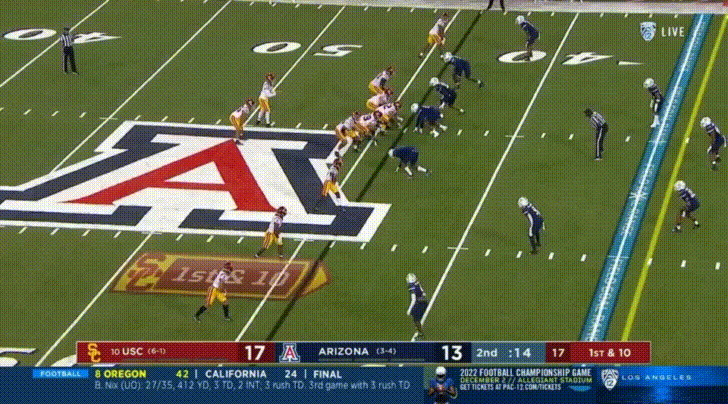
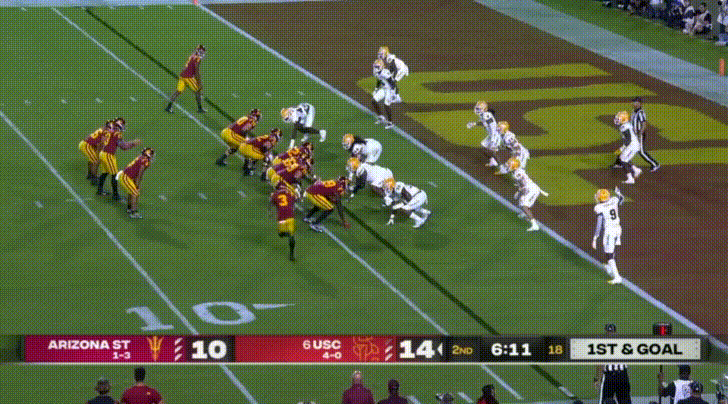
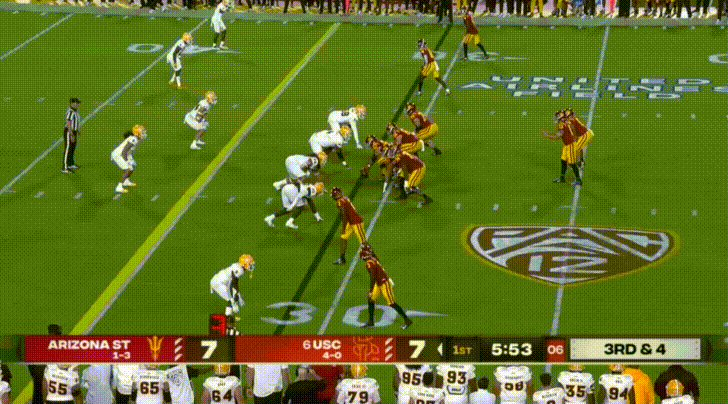
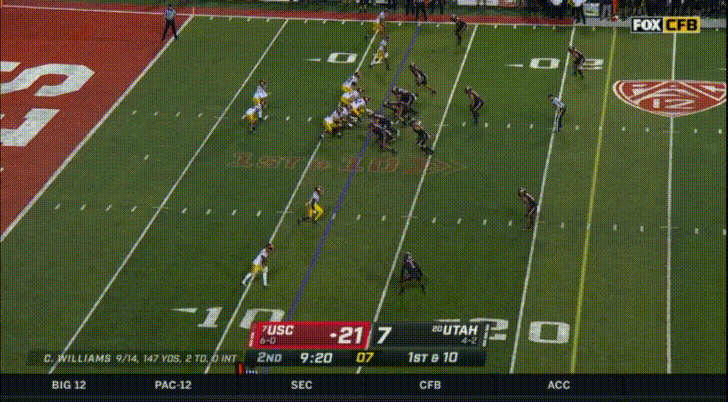
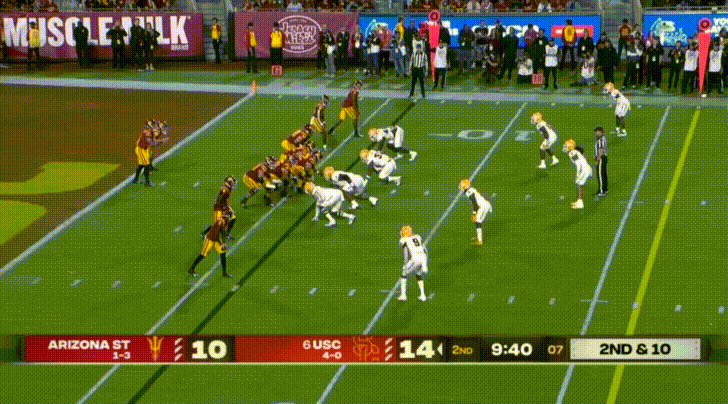
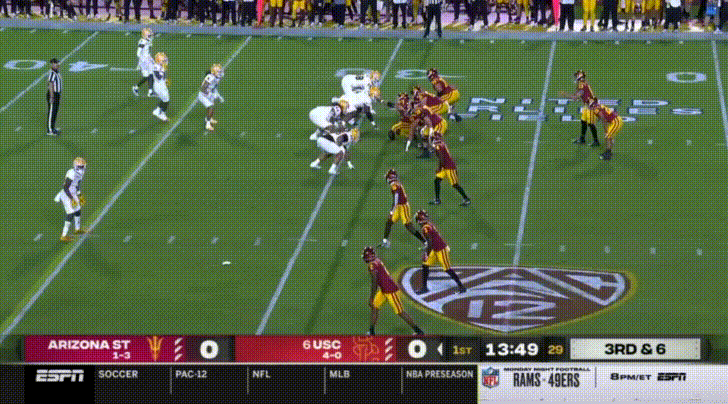
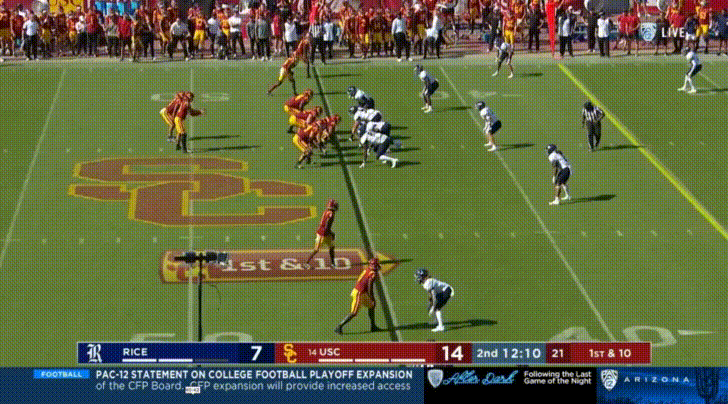
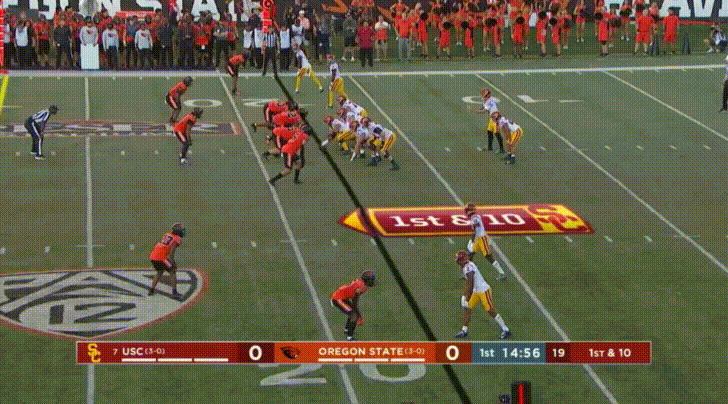
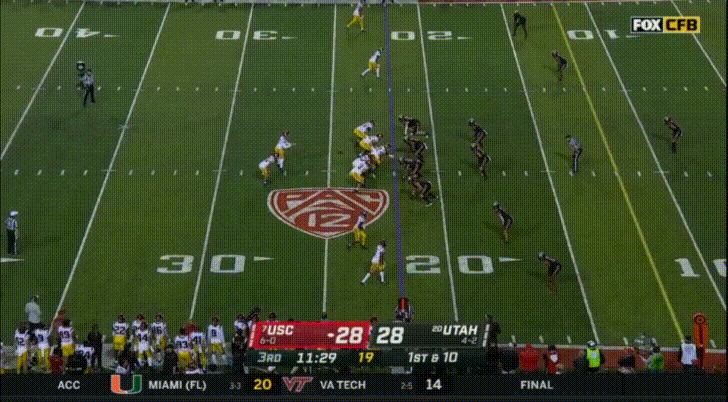
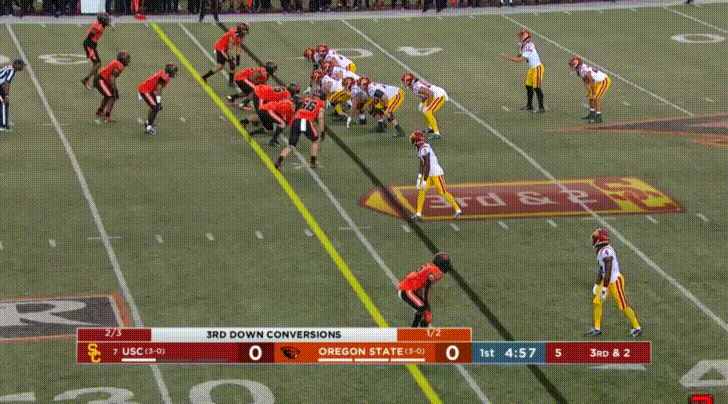
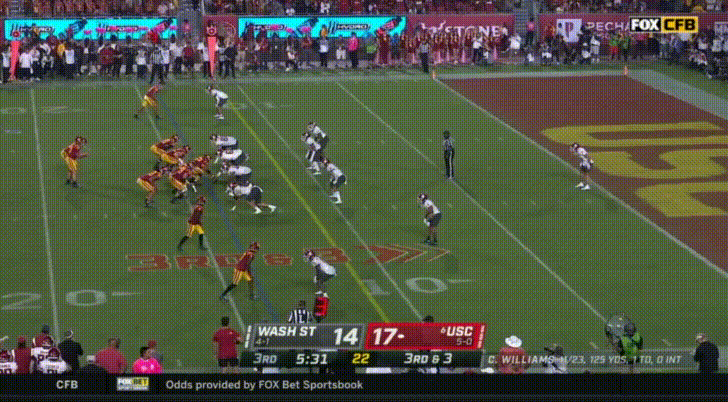
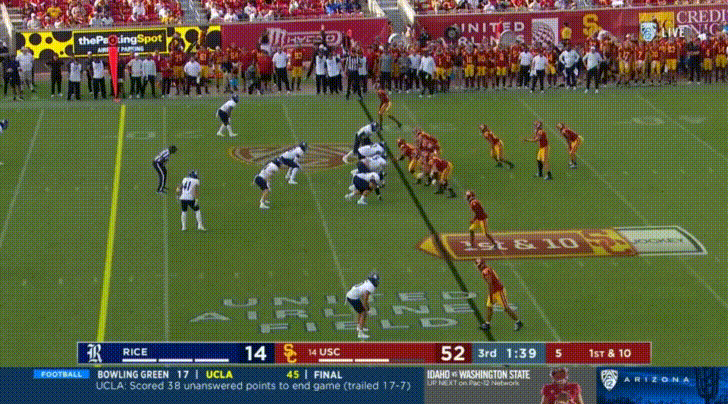
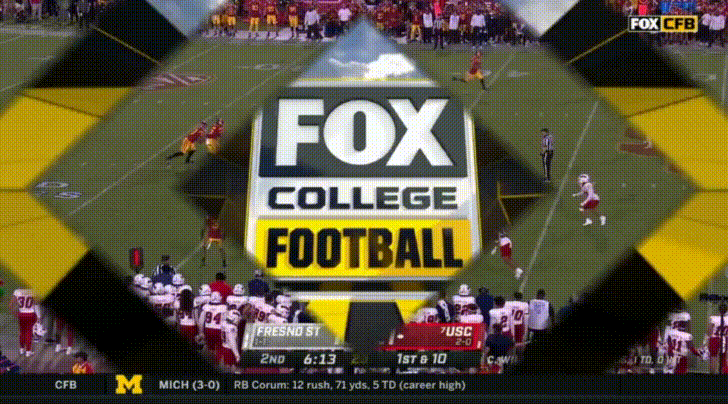
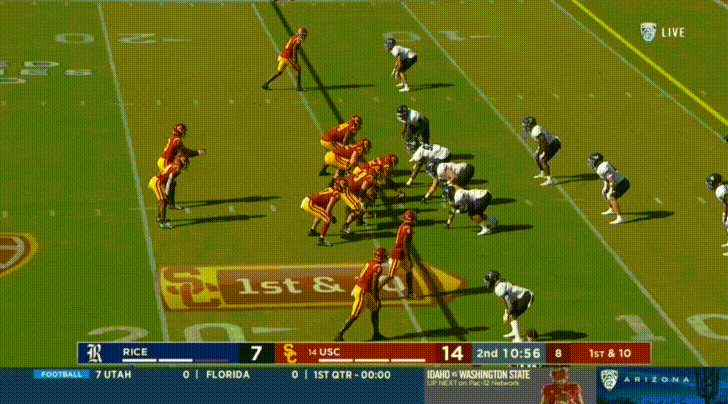
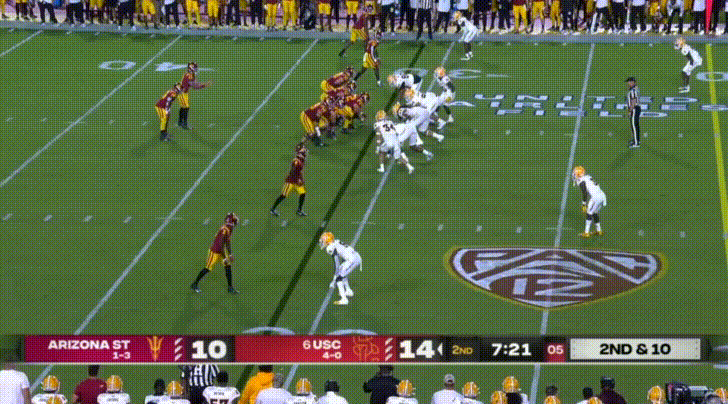

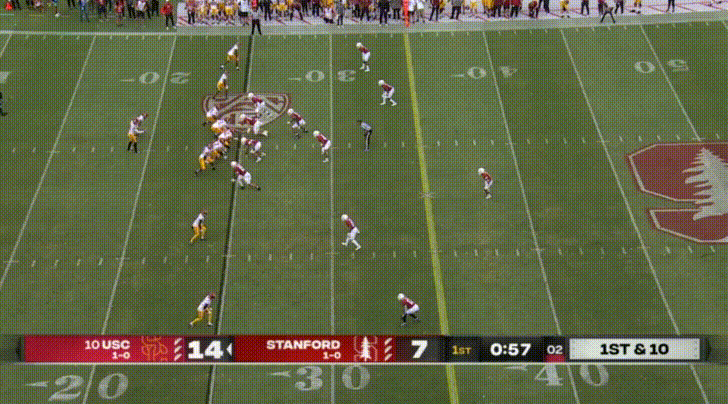
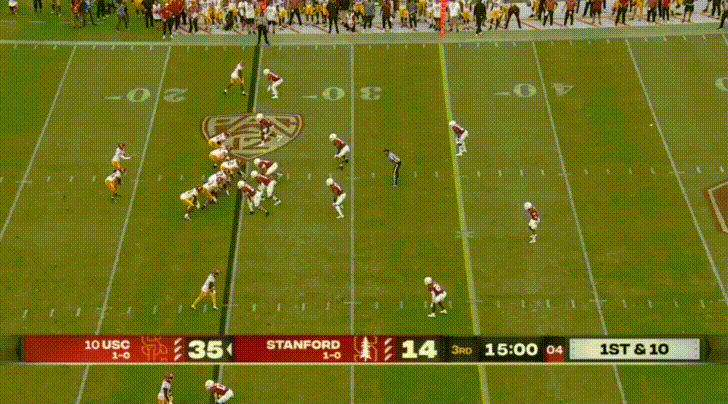

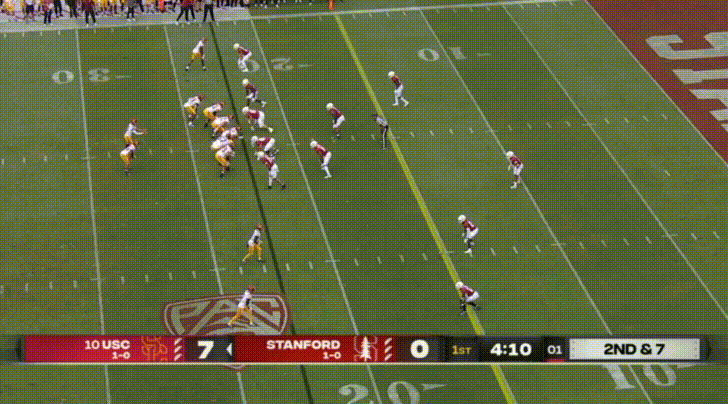
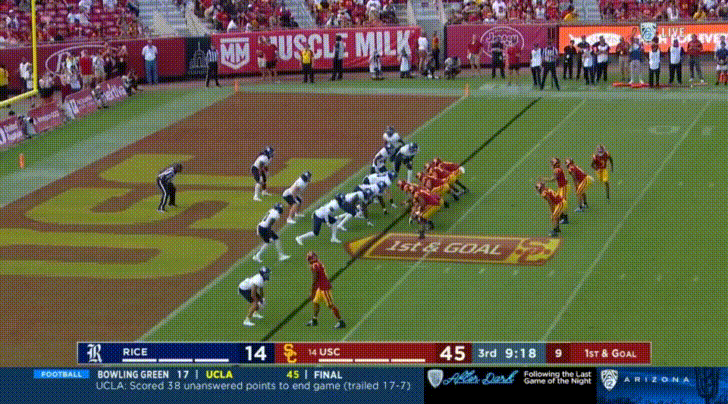
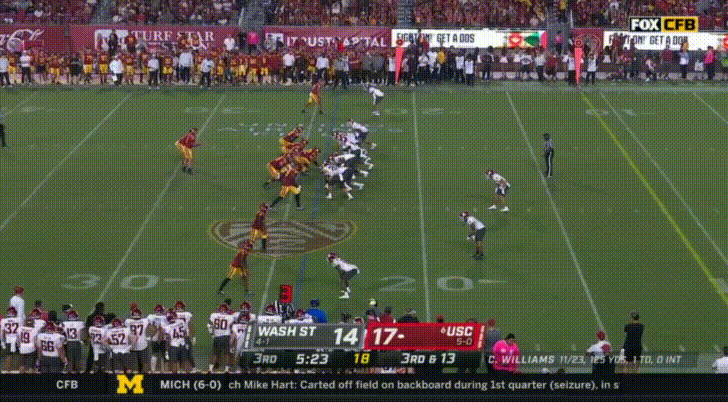

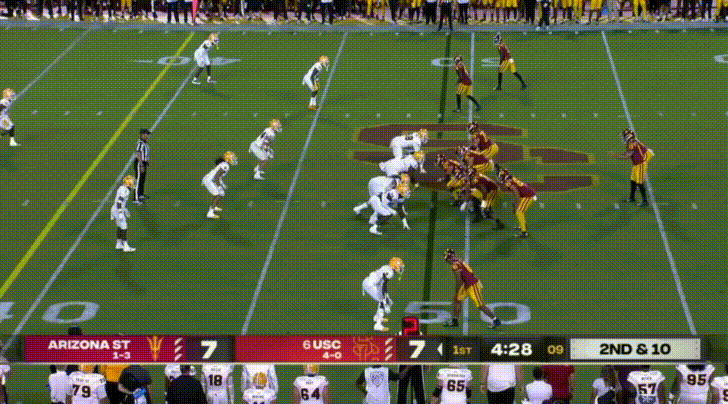
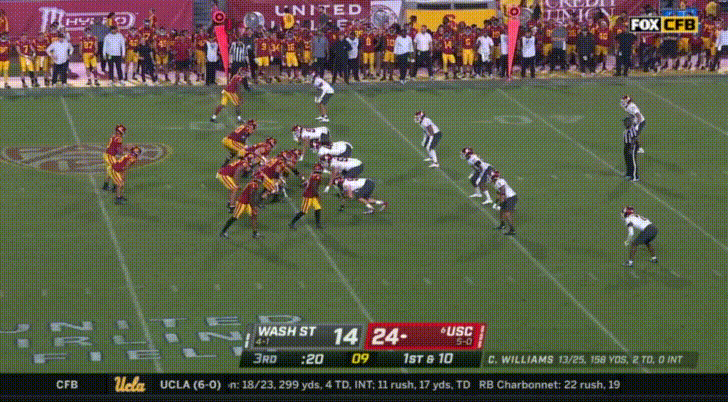
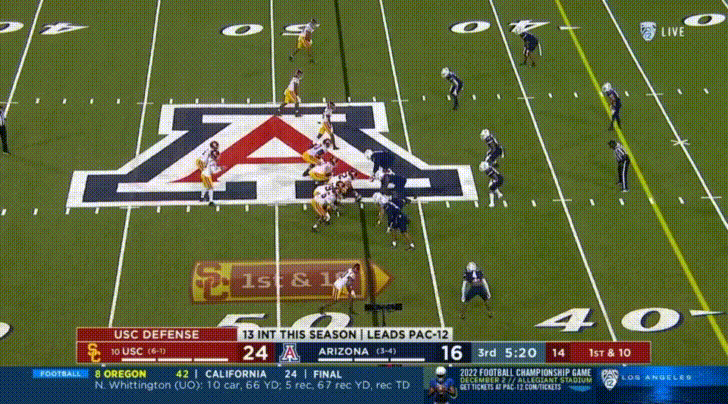
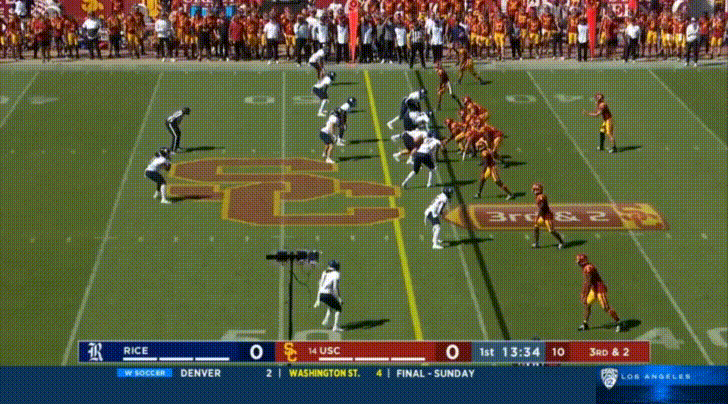
Hide your kids and hide your wife because this is going to get ugly.
Cal has the horses and the talent, we all knew it at the beginning of the season!
Coach WILCOX makes the changes to some of our weaknesses.
I have always liked coach WILCOX, he is smart and a true competitor. He seriously hates to loss. So I believe Cal makes for the 2022 upset of the year. This Saturday evening on ESPN